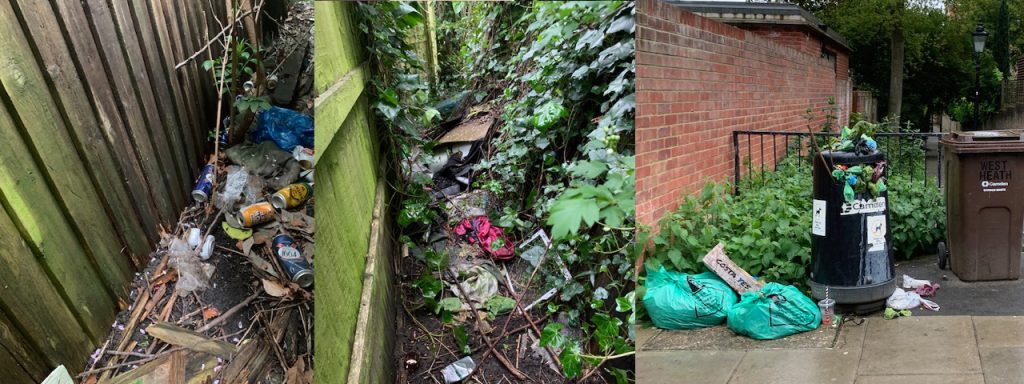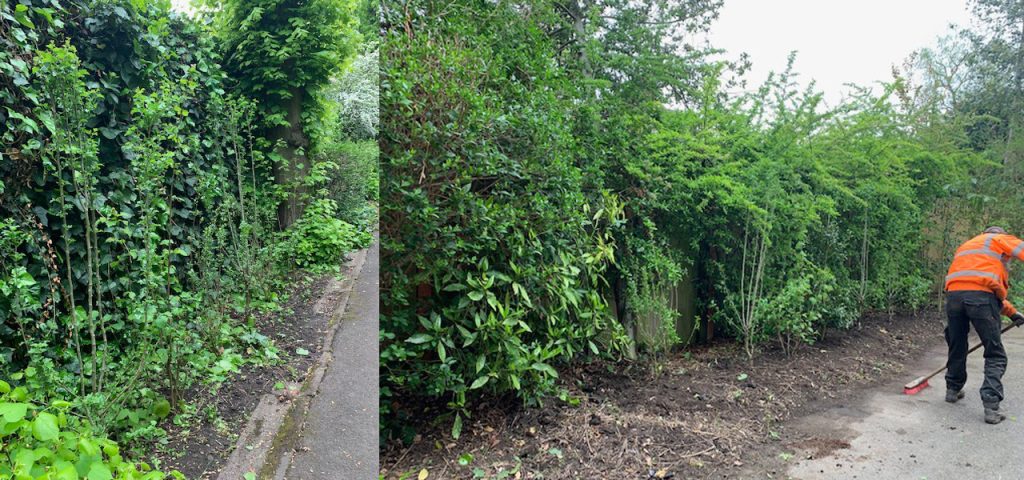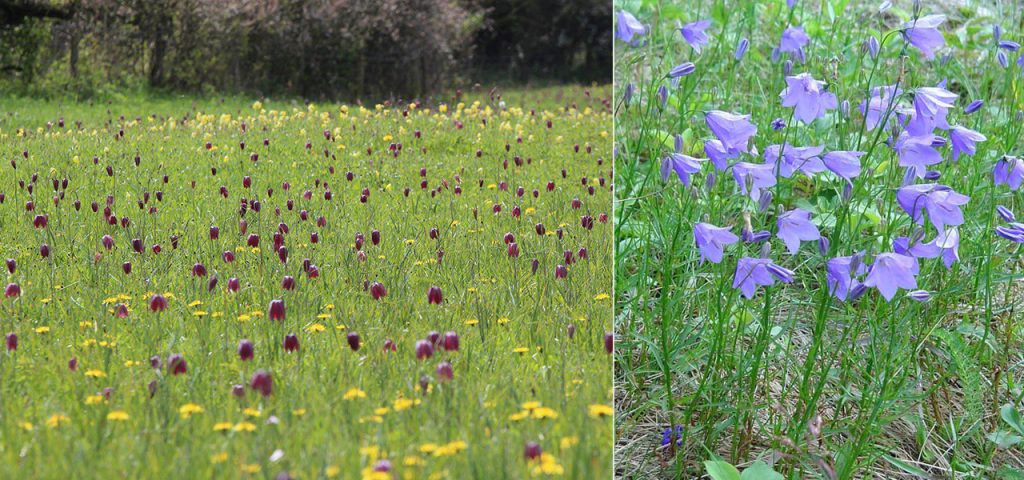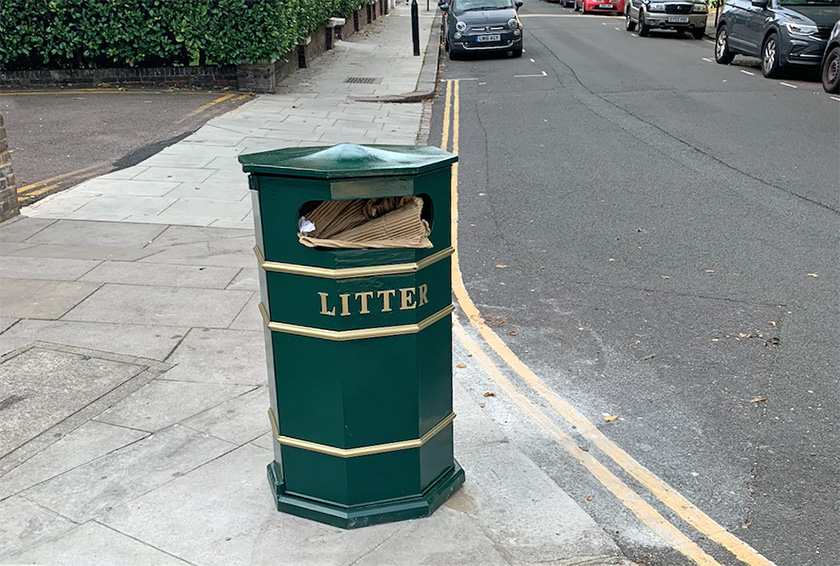What is CIL Funding?
The Community Infrastructure Levy (CIL) is a planning charge which raises funds to be spent on local community projects. It was introduced by the Planning Act 2008 as a mechanism for local authorities to provide or improve infrastructure that will support the development of a local area. In areas with a Neighbourhood Plan, such as the Redington Frognal Neighbourhood Plan, the neighbourhood is entitled to 25% of CIL revenues raised from planning consents granted for development in the plan area.
The local authority is required by law to consult with the community on how this money is allocated. CIL revenues are to be spent on the provision, improvement, replacement, operation or maintenance of infrastructure, or anything else that is concerned with addressing demands that development places on an area.
LOCAL COMMUNITY INFRASTRUCTURE PRIORITIES (Neighbourhood Plan Policy CF 2)
4.23 RATIONALE AND EVIDENCE
The NPPF (para.175) states that the Local Community Infrastructure Levy (LCIL) should
“Place control over a meaningful proportion of the funds raised with the neighbourhoods where development takes place”.
In areas with approved Neighbourhood Plans, the government has resolved that a minimum of 25% of LCIL money is to be spent within the Area. In accordance with this, the Forum strongly encourages Camden Council to use this Plan as the basis for allocating LCIL money in this Area.
The availability of LCIL revenues presents an opportunity for the Neighbourhood Forum to implement community infrastructure facilities in fulfilment of Redington Frognal’s Vision, Objectives and Aims. The 2015 Vision, Objectives and Aims Survey is included as Evidence Base Document (132).
CF 2 LOCAL COMMUNITY INFRASTRUCTURE PRIORITIES
Priorities for expenditure on community infrastructure projects are:
- Greening the area, including tree planting and landscaping;
- Installing high quality street furniture and signage and reduction of street clutter;
- Development of small ‘pocket’ parks;
- Improvement of footpaths;
- Upgrading ground surfaces with high quality paving and wide footways.
4.24 APPLICATION
The policy sets out preferences for use of Local Community Infrastructure Levy money and should be taken into account by the local planning authority in deciding how to allocate such funds.
https://www.redfrogforum.org/
Various projects have been proposed, but not all have been accepted.
Projects which have been successfully completed
Tiled heritage street name signs:
These are replacing those with the Camden logo, which are noted in the Conservation Area Appraisal and Management Plan as causing harm to the Edwardian / Victorian conservation area.
An example is shown here, (Modern sign on the left and Tiled heritage sign on right):
Planting of native shrubs and wildflowers in Croft Way and Bracknell Way:
Planting gaps in these two woodland footpaths were attracting litter and fly tipping.
The gaps have been filled with native shrubs, climbers and wildflowers, aimed at providing habitat and food for birds and insects. Planting is in accordance with Redington Frognal Neighbourhood Plan guidance in Section 6.2 Planting Guidance to Enhance Biodiversity and Conservation Area Character.
Plants were selected with Camden’s Grounds Maintenance Department and include:
- hawthorn, holly, wild privet, honeysuckle, native ivy, foxgloves and hollyhocks.
Examples of the litter-strewn gaps are shown below:
An example of planted gaps and woodland ambience restored:
Restoration of Branch Hill Pond:
The former pond at Branch Hill has been reinstated as a wildlife pond to support local biodiversity. This project was undertaken in conjunction with Ecologists from the City of London Corporation.
Over summer 2023, water levels were being closely observed. The monitoring suggests that the pond is fed from groundwater, which is consistent with the pond as the source of the River Westbourne, as well as from rainwater.
By November 2023, rainfall and rising groundwater had caused the water level to reach the level of the surrounding grass, improving the pond’s aesthetics.
Pond with raised water level and fencing on 7 January 2024
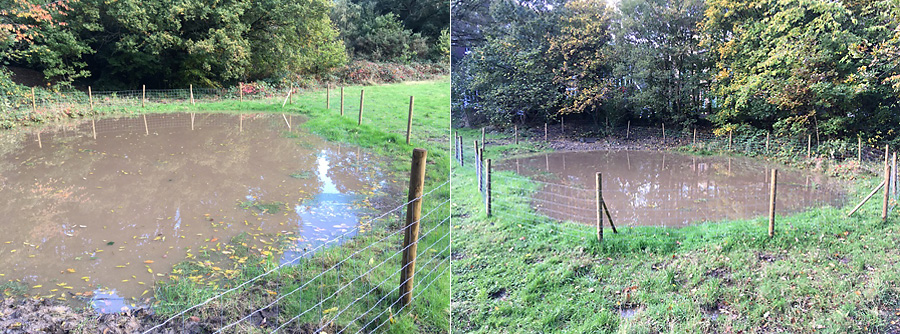 Credit: RedFrog
Credit: RedFrog
Bat and bird boxes have been erected and the surrounding bank and hillside have been planted with over one thousand wildflower plugs and three thousand spring and summer flowing bulbs. Planting has been achieved during six Heath Hands volunteer sessions, contributing approximately one hundred and sixty hours of individual volunteer time to this project.
The results will be visible in spring 2024.
https://www.redfrogassociation.org/branch-hill-pond-development/
Cast iron heritage litter bins:
Cast iron heritage-style litter bins were installed in October 2023. They are in replacement of the disposable black plastic bins and should provide many years of service.
Graffiti should be reported using the Love Clean Streets app: https://lovecleanstreets.com/reports/home
Replacement bin in Frognal
Other initiatives planned for 2024
Lost River Westbourne trail
The Neighbourhood Forum first became interested in the area’s hydrogeology in 2016, when it commissioned Arup to map the former underground rivers for the evidence base for Neighbourhood Plan policy UD 1.
The rivers were absorbed into the sewer system in the Victorian era and are no longer flowing freely through the area. The River Westbourne (also known as the Cannon) and its tributaries is the river which had flowed beneath the area, its source generally considered to have been from Branch Hill Pond.
The Forum plans to acknowledge this element of the area’s heritage through a combination of cast bronze glyphs, lecterns and wooden bollards with QR codes linking to the Redington Frognal Association website and a walking trail.
The presence of springs and underground streams is due to the area’s particular geology.
RedFrog geology presentation by Diana Clements, London Geodiversity Partnership:
https://www.redfrogassociation.org/lost-river-westbourne/
Cast iron heritage railings for Frognal Lane and Croft Way
Frognal Lane features some Victorian cast iron railings. These are rusting and falling into disrepair. They are due to be refurbished and repainted, while the galvanised steel railings will be replaced with cast iron railings to match the original.
Gardening wildlife booklets
It is hoped to circulate gardening wildlife booklets to all RedFrog addresses in spring 2024.
Rejected Projects:
Projects which have been rejected include:
- greening of the junction of Frognal and Finchley Road. This section of Frognal is managed by TfL, which did not support the application due to concerns over visibility for motorists;
- a year’s funding for Camden’s tree section to commission a consultant to prepare the paperwork for tree preservation orders to protect veterans and other noteworthy trees;
- training for Camden planners in applying the Biodiversity and Green Infrastructure policies of the Redington Frognal Neighbourhood Plan;
- exploration of traffic calming measures for Arkwright Road.
Camden’s list of approved LCIL projects is published at:
https://www.camden.gov.uk/community-infrastructure-levy#agiu
Camden’s LCIL suggestions map closed on November 16th 2018: https://camdencilmap.commonplace.is
The RedFrog survey of potential CIL projects closed on 9 November 2018: https://www.surveymonkey.co.uk/r/CILideas

